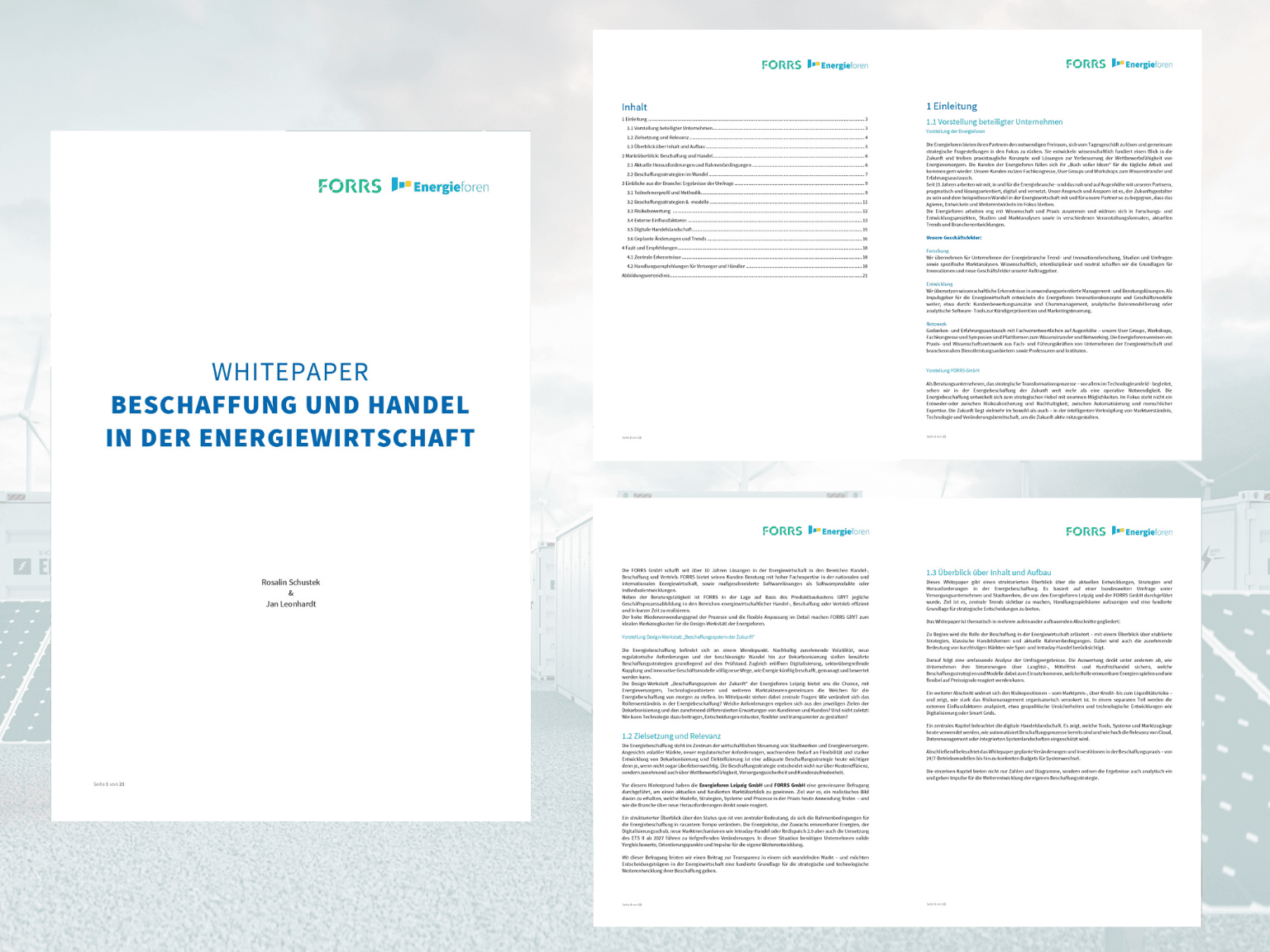05.06.2024 / 09:15
Building up the Hydrogen Infrastructure
Energy Markets

Building up the Hydrogen Infrastructure
In our previous post, "Reaching Regulatory Certainty in EU Hydrogen Markets," we explored Europe's journey towards regulatory stability and certainty for green hydrogen producers, which encourages investors to commit to projects. Nevertheless, the escalating expenses involved in hydrogen production are deterring investors, leading to fewer participants and a lack of infrastructure, which in turn obstructs further FiDs. Yet, the crucial groundwork for expanding the industry is actively being planned.
In this entry in our #HydrogenHorizon series, we will first address the critical cost drivers in green hydrogen production and their significant impact on the industry. Following that, we dive into the EU's efforts to develop essential hydrogen infrastructure, including pipeline initiatives at an EU level, and Germany's central hydrogen network.
The objective is to provide a comprehensive overview of the current challenges that green hydrogen developers are facing into reaching FID, including increased costs, and the task of bridging supply and demand through new hydrogen pipeline projects.
Factors Driving the Cost of Hydrogen Production
The production costs of green hydrogen, referred to as the Levelized Cost of Hydrogen (LCOH), are still much higher compared to those of grey or blue hydrogen. While many earlier predictions suggested that green hydrogen would become cheaper than other methods by 2030, recent trends in near-term indicate otherwise for the LCOH.
A study published by the Hydrogen Council, "Hydrogen Insights" (December 2023), indicates a 30-65% increase in LCOH, raising the cost estimates for green hydrogen production to 4.5-6.5 USD/kg, which is significantly higher than the 2030 cost targets of 2.5-4.0 USD/kg. This increase can be attributed to a list of factors:
Higher green hydrogen plant financing costs
Recent projects have seen an increase in near-term capital expenditures and financing costs, primarily driving up the LCOH. Global uncertainty and record-high inflation have led to increased interest rates, impacting the economic feasibility, given that these projects are very capital-intensive with a high debt-to-equity ratio. Moreover, an increment of the Weighted Average Cost of Capital (WACC) to 7.9% was observed in the period between September 2022 and June 2023, with even further increments in particular industries, like Technology (9.2%) and Industrial Manufacturing (8.1%), further challenging the financial viability of green hydrogen initiatives.
Availability of cheap renewable energy
Solar and wind electricity costs, crucial for green hydrogen production, have risen due to global uncertainties, inflation, and supply chain disruptions. In 2023, for the first time, the costs of renewable electricity generation increased by 10-15% above 2020 pre-COVID levels, pushing up green hydrogen's final cost and diminishing its competitiveness against blue or grey hydrogen.
Increment of electrolyzer pricing
Electrolyzers, central technology to green hydrogen production, make up 30-50% of a project's capital expenditures and have defied expectations of a 45% cost reduction by 2030, with prices instead rising. In China, the US, and Europe, the cost of producing and installing electrolyzers has surged over 50% since 2023, against predictions of a decrease, mainly due to inflation and higher costs for materials, utilities, and labor, according to BNEF’s Electrolyzer Price Survey, 2024. This contradicts BNEF’s 2022 forecast of up to a 10% annual cost decline, with the median capital cost now having increased by 57%.
The same BNEF study also emphasized that China's economy, more resilient to global inflation and supported by an advanced electrolyzer supply chain, flexible standards, and lower labor costs, has achieved an average system-level cost for electrolyzers at about USD 600/kW. In contrast, those manufactured in Europe or the US cost around USD 2,500/kW.
In short, the production costs for green hydrogen are rising significantly, deviating from previous forecasts of a decrease by 2030. Factors contributing to this increase include higher financing costs for green hydrogen plants, rising prices for renewable energy, and a surge in electrolyzer pricing. These challenges are pushing green hydrogen's financial viability further from its cost reduction targets.
Essential Hydrogen Infrastructure in the EU
The International Energy Agency (IEA) has forecasted that a mere 7% of the renewable hydrogen production capacity announced for 2030 is on schedule, pinpointing an inadequate transport infrastructure as a critical bottleneck. However, in Europe, the necessary and core hydrogen network is being planned and developed through the European Hydrogen Backbone (EHB) initiative, which seeks to deliver the necessary grid network, connecting hydrogen supply and demand across Europe.
The EHB, founded in 2020, is a project that unites thirty-three energy infrastructure operators around the goal of fostering a climate-neutral Europe through a strong renewable and low-carbon hydrogen market. The initiative envisions that by 2030 an initial 28,000 km pipeline network could emerge, with an estimated growth to 53,000 km by 2040, leveraging both existing as well as new pipelines.

Figure 1. Envisioned European Hydrogen Backbone by 2040. Taken from https://www.ehb.eu.
To achieve the REPowerEU plan's 2030 hydrogen demand goals, the EHB proposes five key hydrogen pipeline corridors. Initially, these corridors will connect local supply and demand within various European regions, and later expand to link Europe with neighboring areas with export capabilities. The proposed corridors are:
- Corridor A: North Africa & Southern Europe
- Corridor B: Southwest Europe & North Africa
- Corridor C: North Sea
- Corridor D: Nordic and Baltic regions
- Corridor E: East and South-East Europe
These corridors cover both domestic and international supply markets, matching the REPowerEU plan's three import corridors.

Figure 2. Key Supply Corridors of the EHB vision. Taken from https://ehb.eu.
The EHB initiative's roadmap is divided into two key phases: the Development Phase, running from today until approximately 2027, and the Construction & Operations Phase, extending from 2027.
The initial phase focuses on development studies, obtaining permits, securing regulatory approvals, and conducting technical analyses, all of which require developmental expenditures (DEVEX) to ensure the project's feasibility and bankability.
The subsequent phase involves construction, workforce recruitment, and procurement of necessary materials and equipment, thus necessitating capital for constructing the network and for its ongoing maintenance and operation.
To summarize, a lack of core grid infrastructure is reported to be one of the major challenges for hydrogen transportation. However, to counter this, the EHB initiative, launched in 2020, aims to establish an extensive hydrogen pipeline network across Europe. This network will connect supply and demand through strategic corridors, aligning with the EU's climate goals and the REPowerEU plan.
Essential Infrastructure in Germany
In November 2023, FNB Gas e.V. submitted the draft of the German Hydrogen Core Network to the Federal Network Agency and the Federal Ministry of Economics and Climate Protection. Similarly to the EHB efforts, the project aims to establish a hydrogen pipeline network, but this time at a nationwide level in Germany.
The core network is designed with a feed-in capacity of 100 gigawatts and a take-off capacity of 87 gigawatts, ensuring it is well-equipped to meet the anticipated demand, which is forecast to be around 95 to 130 TWh of hydrogen in 2030, according to the German National Strategy.
The total length of the project is expected to be around 9,700 km of which approximately 60% will be converted from natural gas pipelines for hydrogen use only and the remainder 40% will be newly built. The investment costs for this target total €19.8 billion and it is expected to be built by 2037 (delayed from 2032). The network will be funded by private investors, which will then recover their investment through grid fees. with a guaranteed a 6.7% return on equity before taxes guaranteed by the German government.
The plan from FNB Gas e.V is to start the commissioning of hydrogen pipelines, going into operation successively. This approach indicates that the hydrogen pipelines within the core network will be activated in a sequential manner, spanning from 2025 to 2037. This staggered operational timeline is strategically designed to ensure a consistent and uninterrupted supply of natural gas throughout the transition period.
Converting natural gas pipelines to be hydrogen-ready necessitates major modifications while maintaining the current network's ability to meet natural gas demands. This conversion, involving around 5,000 kilometers of pipelines, will require the construction of short new pipeline segments in certain areas to enhance natural gas supply.
The creation of this network represents a collaborative endeavor among various gas TSOs, aimed at achieving the rapid and cost-effective development of the hydrogen infrastructure to facilitate the market's growth.

Figure 3. Proposed H2-Core Network for Germany. Taken from https://fnb-gas.de/wasserstoffnetz-wasserstoff-kernnetz/
FNB Gas e.V.'s proposal for Germany's Hydrogen Core Network marks a significant move towards a nationwide hydrogen infrastructure, blending converted and new pipelines to meet future demand. Despite a delayed completion to 2037, this collaborative effort among gas TSOs aims to foster market growth efficiently.
Critique from Industry and Conclusion
The production costs of green hydrogen are having significant impacts on the industry, driven by high capital expenditures, scarce affordable electrolyzers, and rising renewable energy prices. This issue is global, affecting various sectors. European stakeholders are particularly concerned about China's growing advantage on electrolyzer costs, similar to past challenges in the solar sector, prompting calls for "Made in Europe" criteria for EU subsidies to protect local industries and ensure energy security.
The development of Germany's hydrogen pipeline infrastructure is delayed by five years, now expected to start by 2037 due to changes in financial support. This has sparked doubts about the impact on future investments. Furthermore, there are concerns that the planned capacity might exceed actual hydrogen demand by the time of rollout, although the delay offers a chance to reassess and adjust plans accordingly.
The cost landscape for green hydrogen is challenging, with prices expected to rise instead of to decline by 2030. These increasing costs pose viability issues for green hydrogen projects, potentially affecting investment decisions. Delays in developing key hydrogen infrastructures like the EHB and German H2-Core Network could further deter investor confidence if not timely addressed. This highlights the need for strategic investments in infrastructure to support the hydrogen economy's growth.
Recent data indicate a positive trend in EU inflation, with rates falling since their peak in October 2022. This could favorably impact the financing of green hydrogen projects with high debt-to-equity ratios. Moreover, key hydrogen infrastructure developments, like the EHB initiative and the German H2-Core Network, will bridge the demand-supply gap, aiding more projects in achieving FiD.
References
Hydrogen – Competence for a sustainable future. (n.d.). https://www.rosen-group.com/en/business-fields/futurefuels/hydrogen?gad_source=1&gclid=EAIaIQobChMIx7PcqKOPhgMVFJ2DBx0V4grXEAAYASAAEgKYfPD_BwE
Electrolyzer prices – what to expect. (2024, March 21). Pv Magazine International. https://www.pv-magazine.com/2024/03/21/electrolyzer-prices-what-to-expect/
Gong, X., Quitzow, R., & Boute, A. (2023). China’s emerging hydrogen economy: Policies, institutions, actors. Research Institute for Sustainability - Helmholtz Centre Potsdam.
Schöniger, S., Snellen, H., & Tschöpel, A. (2023, October 25). Cost of Capital Study 2023. KPMG. https://kpmg.com/de/en/home/insights/2023/10/cost-of-capital-study-2023.html
Will solar PV and wind costs finally begin to fall again in 2023 and 2024? – Renewable Energy Market Update - June 2023 – Analysis - IEA. (2023). IEA. https://www.iea.org/reports/renewable-energy-market-update-june-2023/will-solar-pv-and-wind-costs-finally-begin-to-fall-again-in-2023-and-2024
Hydrogen Articles Collection. (2021). Fueling the future of mobility: hydrogen electrolyzers. https://www2.deloitte.com/content/dam/Deloitte/jp/Documents/global-business-support/jp-gbs-fueling-the-future-of-mobility-hydrogen-electrolyzers.pdf
Hydrogen Council, McKinsey, Hydrogen Council, & McKinsey. (2023). Hydrogen Insights 2023. The state of the global hydrogen economy, with a deep dive into renewable hydrogen cost evolution https://hydrogencouncil.com/wp-content/uploads/2023/12/Hydrogen-Insights-Dec-2023-Update.pdf
Parkes, R. (2024, March 5). Cost of electrolysers for green hydrogen production is rising instead of falling: BNEF. Hydrogen Insight. https://www.hydrogeninsight.com/electrolysers/cost-of-electrolysers-for-green-hydrogen-production-is-rising-instead-of-falling-bnef/2-1-1607220



